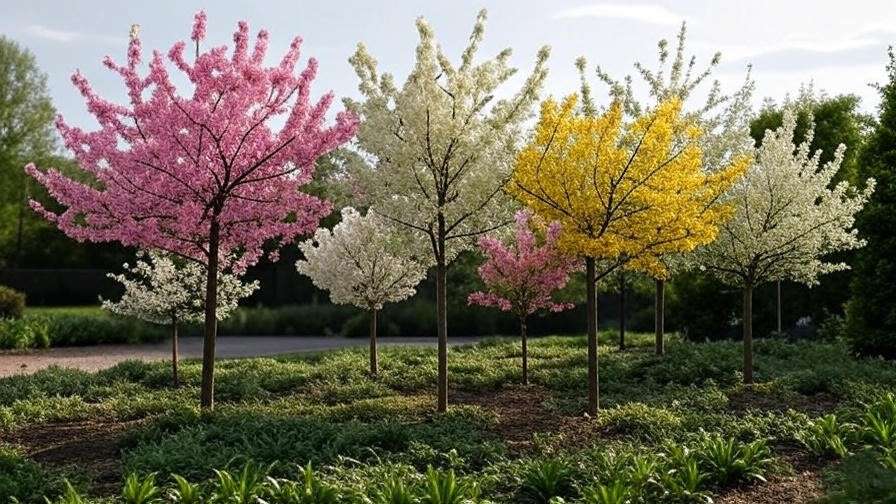Picture this: a cozy backyard bursting with vibrant blooms, where delicate petals dance in the breeze, and every season brings a new wave of beauty. With small flowering trees, this vision can become your reality, even in the tiniest of spaces! 🌿 Whether you’re a homeowner with a compact yard, an urban gardener, or a landscaper aiming to elevate a client’s patio, small flowering trees offer unmatched charm and versatility. As a horticulturist with over a decade of experience in tree care and landscape design, I’ve worked with countless species and consulted with experts at institutions like the Royal Horticultural Society to bring you this guide. In this article, you’ll discover 10 stunning small flowering trees, expert care tips, and practical design ideas to transform your garden into a breathtaking oasis. Let’s dive in! 🌺
Why Choose Small Flowering Trees? 🌼
Small flowering trees are the unsung heroes of garden design, offering a perfect blend of beauty, functionality, and manageability. Here’s why they’re a must-have for any garden enthusiast.
Benefits for Small Spaces
These trees are tailor-made for compact areas like urban gardens, patios, or small yards. Unlike their towering counterparts, small flowering trees grow to a modest height—typically 10 to 20 feet—making them ideal for tight spaces. Their vibrant blooms, from soft pinks to fiery reds, add a pop of color without overwhelming your landscape. Plus, many offer multi-season interest with spring flowers, summer foliage, and fall color, ensuring your garden stays captivating year-round. They’re also low-maintenance, perfect for busy homeowners who want beauty without the hassle.
Environmental and Practical Advantages
Beyond aesthetics, small flowering trees benefit the environment and your lifestyle. They attract pollinators like bees and butterflies 🐝, supporting local ecosystems and boosting biodiversity. Many provide shade, improve air quality, and even offer edible fruit or striking bark for winter interest. Their compact size makes them versatile for various roles—whether as a focal point, a border accent, or a container plant. With the right tree, you can create a sustainable, wildlife-friendly garden that’s as practical as it is beautiful.
Top 10 Small Flowering Trees to Elevate Your Garden 🌳
Here’s a curated list of 10 small flowering trees that combine stunning visuals with easy care. Each is selected for its adaptability, beauty, and suitability for small spaces, with expert insights to guide your choice.
1. Flowering Crabapple (Malus spp.) 🍎
- Description: Crabapples are compact trees known for their dazzling spring blossoms in pink, white, or red, followed by small apples in fall.
- Why Choose It: These trees offer year-round appeal with flowers, fruit, and vibrant fall foliage. Their sizes range from 8 to 20 feet, perfect for small yards.
- Best For: Urban gardens, small lawns, or as a specimen tree.
- Care Tips: Plant in well-drained soil with full sun (6+ hours daily). Prune annually in late winter to maintain shape and remove dead wood. Choose disease-resistant varieties like ‘Adirondack’ or ‘Sargent’ to avoid issues like apple scab.
- Expert Insight: According to the USDA Plant Database, modern crabapple cultivars are bred for resilience, making them a low-maintenance choice for beginners.

2. Japanese Flowering Cherry (Prunus serrulata) 🌸
- Description: Famous for their delicate pink or white blossoms, these trees create a romantic spring spectacle.
- Why Choose It: Their fleeting blooms make them a stunning focal point, with sizes ranging from 12 to 20 feet.
- Best For: Patios, courtyards, or Zen-inspired gardens.
- Care Tips: Plant in full sun with well-drained soil. Water moderately and protect from strong winds to prevent branch damage. Prune lightly after flowering to maintain shape.
- Pro Tip: Pair with low-growing perennials like lavender for a harmonious, layered look.
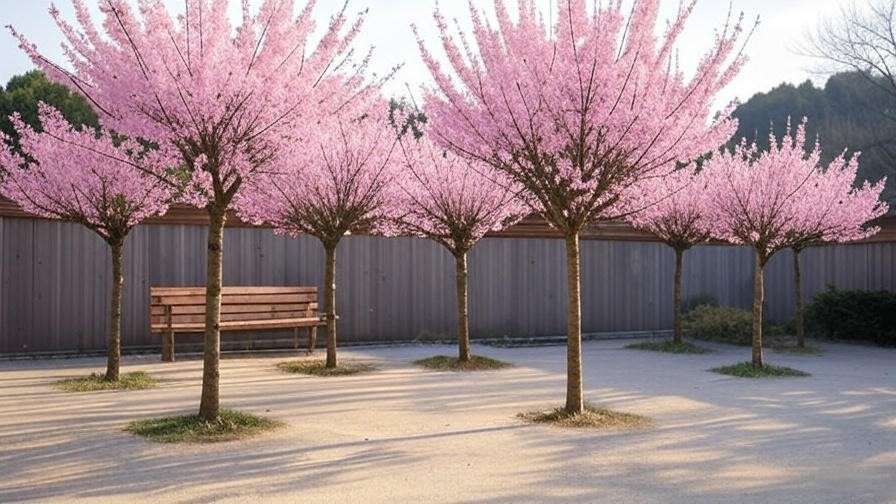
3. Redbud (Cercis canadensis) 💖
- Description: Redbuds boast heart-shaped leaves and vibrant pink-purple flowers that bloom directly on branches in early spring.
- Why Choose It: Their compact size (15–20 feet) and early blooms make them a standout in any garden.
- Best For: Mixed borders or small woodland gardens.
- Care Tips: Thrives in partial shade to full sun with well-drained soil. Water regularly during the first year. Minimal pruning is needed, but remove dead branches in late winter.
- Example: The ‘Forest Pansy’ variety offers striking burgundy foliage for added drama.
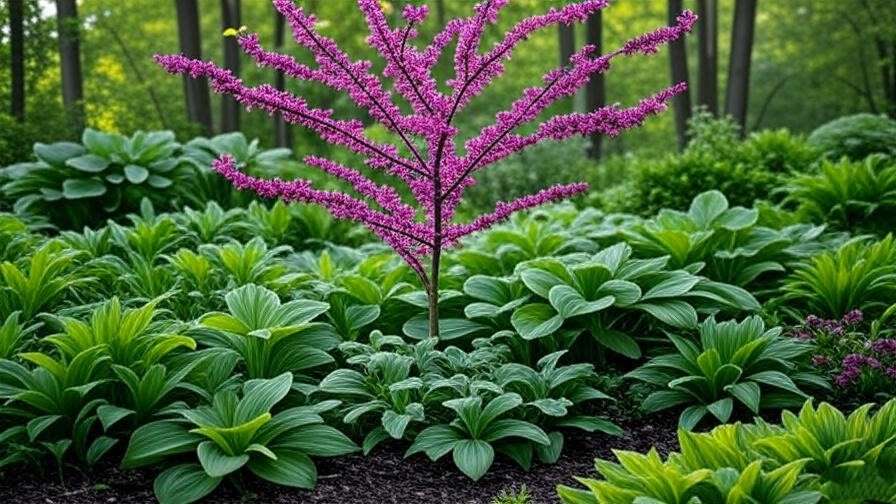
4. Dogwood (Cornus kousa or Cornus florida) 🌼
- Description: Dogwoods feature elegant white or pink bracts (modified leaves) that mimic flowers, with vibrant fall foliage and red berries.
- Why Choose It: Multi-season interest makes them a favorite, growing 15–20 feet tall.
- Best For: Shady corners or as an understory tree.
- Care Tips: Plant in acidic, well-drained soil with partial shade. Water consistently and mulch to retain moisture. Kousa dogwoods are more disease-resistant than Florida varieties.
- Expert Insight: The Royal Horticultural Society recommends Kousa dogwoods for their resilience to anthracnose, a common fungal disease.
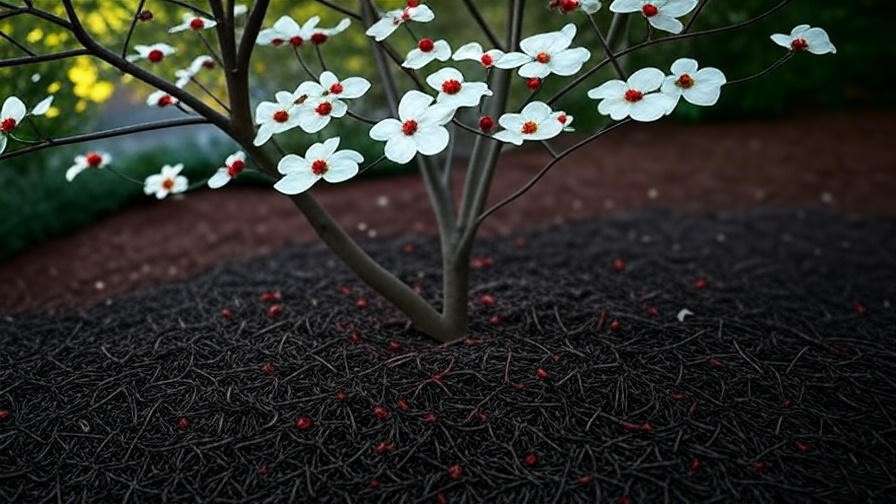
5. Saucer Magnolia (Magnolia x soulangeana) 🌷
- Description: Known for large, cup-shaped pink or white flowers, saucer magnolias bloom spectacularly in early spring.
- Why Choose It: Their dramatic blooms (up to 8 inches wide) create a show-stopping effect on trees 15–20 feet tall.
- Best For: Small lawns or as a centerpiece in garden beds.
- Care Tips: Plant in rich, well-drained soil with full sun to partial shade. Protect from late frosts, which can damage early blooms. Water deeply during dry spells.
- Pro Tip: Choose a sheltered spot to extend bloom time and prevent petal browning.
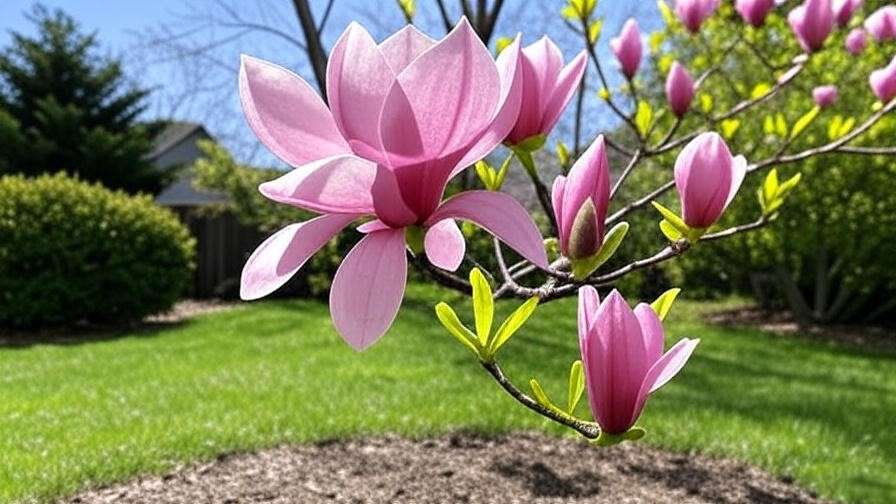
6. Serviceberry (Amelanchier spp.) 🍇
- Description: Serviceberries produce delicate white flowers in spring, followed by edible, blueberry-like fruit in summer and fiery fall foliage.
- Why Choose It: Their multi-season appeal—flowers, fruit, and autumn color—makes them a versatile choice, growing 10–20 feet tall.
- Best For: Edible landscapes or wildlife-friendly gardens.
- Care Tips: Plant in full sun to partial shade with well-drained soil. They’re adaptable to various soil types but prefer slightly acidic conditions. Prune lightly after fruiting to maintain shape.
- Example: The ‘Autumn Brilliance’ cultivar is prized for its vivid red-orange fall leaves, adding a pop of color to small spaces.
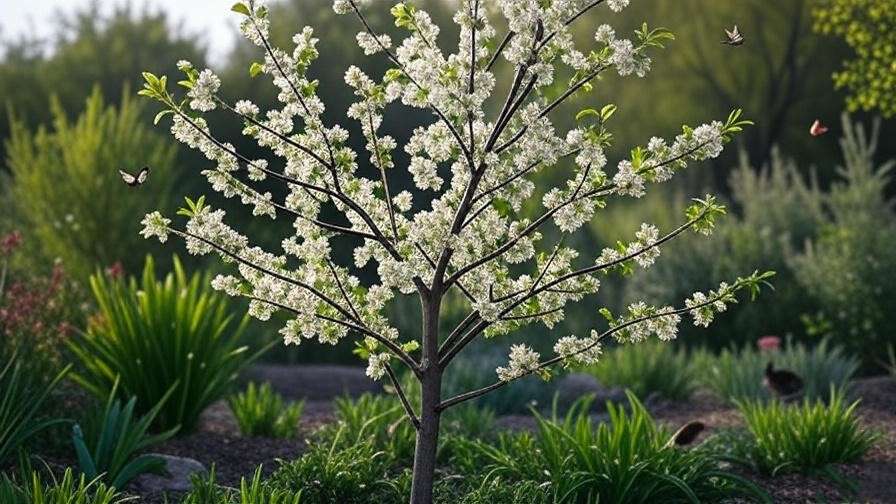
7. Hawthorn (Crataegus spp.) 🌹
- Description: Hawthorns offer clusters of white or pink flowers in spring, followed by red berries in fall, on trees 15–20 feet tall.
- Why Choose It: Hardy and wildlife-friendly, they attract birds and pollinators while maintaining a compact form.
- Best For: Hedges, borders, or small urban lots.
- Care Tips: Plant in full sun with well-drained soil. Water moderately and prune in late winter to remove crowded branches. Opt for thornless varieties like ‘Crimson Cloud’ for safety around walkways.
- Expert Insight: Hawthorns are noted for their resilience in urban environments, per studies from the USDA Forest Service.
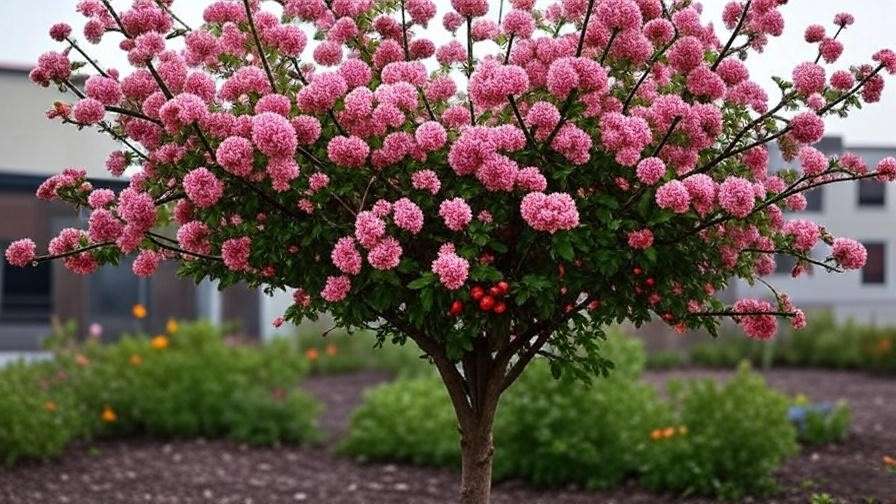
8. Star Magnolia (Magnolia stellata) ✨
- Description: This petite tree, growing 10–15 feet, produces fragrant, star-shaped white flowers in early spring.
- Why Choose It: Its compact size and early, fragrant blooms make it perfect for small gardens or containers.
- Best For: Patios, walkways, or near seating areas to enjoy its scent.
- Care Tips: Plant in moist, acidic soil with full sun to partial shade. Protect from harsh winds and mulch roots to retain moisture. Water regularly during establishment.
- Pro Tip: Use a thick layer of organic mulch to keep roots cool and moist, especially in hot climates.

9. Dwarf Lilac Tree (Syringa spp.) 💜
- Description: Dwarf lilac trees, reaching 8–15 feet, produce fragrant purple or white flower clusters in late spring.
- Why Choose It: Their intoxicating scent and compact growth make them ideal for small spaces.
- Best For: Cottage gardens or near patios for fragrance.
- Care Tips: Plant in full sun with well-drained, neutral to slightly alkaline soil. Deadhead spent blooms to encourage reblooming. Prune after flowering to maintain shape.
- Example: ‘Miss Kim’ is a compact, hardy variety with lavender blooms and excellent cold tolerance.
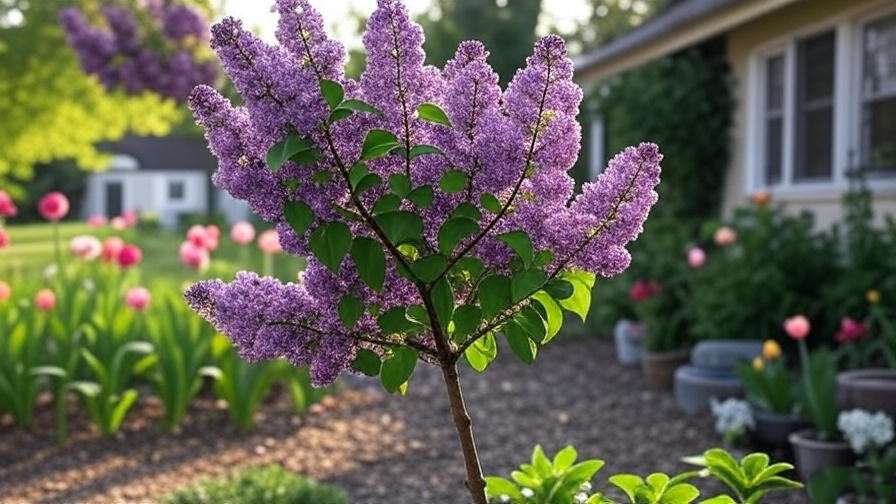
10. Crape Myrtle (Lagerstroemia indica) 🌞
- Description: Crape myrtles dazzle with vibrant summer blooms in pink, red, or white, complemented by smooth, peeling bark. Dwarf varieties grow 6–12 feet.
- Why Choose It: Heat-tolerant and long-blooming, they thrive in warm climates.
- Best For: Sunny yards, borders, or containers.
- Care Tips: Plant in full sun with well-drained soil. Water moderately and prune in late winter to promote flowering. Avoid over-pruning, which can reduce blooms.
- Expert Insight: Dwarf cultivars like ‘Pocomoke’ are ideal for small spaces, offering vibrant color without overwhelming the landscape.
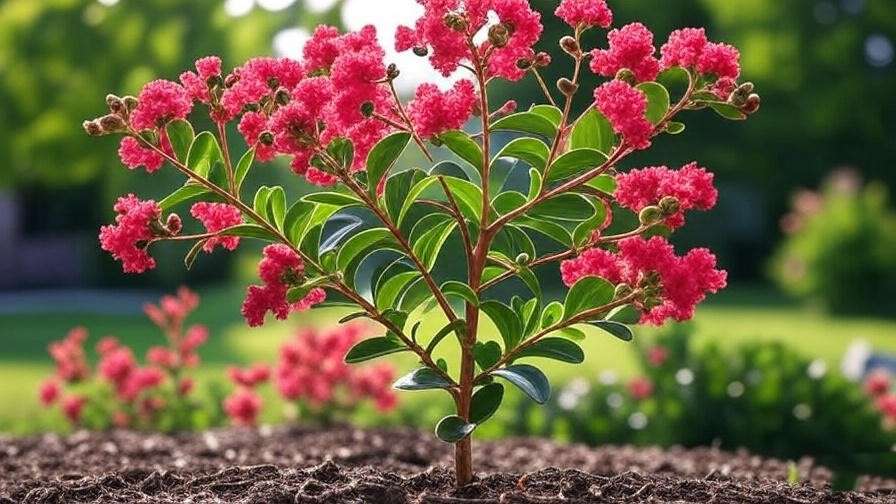
How to Choose the Right Small Flowering Tree for Your Garden 🌿
Selecting the perfect small flowering tree requires careful consideration of your space, climate, and aesthetic goals. Here’s how to make an informed choice.
Assessing Your Space and Climate
Start by evaluating your garden’s conditions. Measure the available space to ensure the tree’s mature size fits without crowding. Check sunlight exposure—most small flowering trees need at least 6 hours of sun daily, though some, like dogwoods, tolerate partial shade. Test your soil’s drainage and pH, as some trees, like magnolias, prefer acidic conditions. Finally, confirm your USDA Hardiness Zone (available via the USDA Plant Hardiness Zone Map) to choose a tree suited to your climate. For example, crape myrtles thrive in warmer zones (7–9), while redbuds are hardy in zones 4–9.
Matching Trees to Your Aesthetic Goals
Consider the visual impact you want. For soft, romantic vibes, Japanese cherry or star magnolia offers delicate blooms. For bold color, crape myrtle or redbud delivers vibrant hues. Plan for seasonal interest: serviceberries provide spring flowers and fall color, while crabapples add winter fruit. Mix trees with complementary bloom times—like early-spring magnolias and summer-blooming crape myrtles—for year-round beauty.
Practical Considerations
Think about maintenance, budget, and ecological benefits. Low-care options like hawthorn or serviceberry suit busy gardeners, while magnolias may need more attention to soil and frost protection. Factor in costs for planting, soil amendments, and ongoing care like pruning or fertilizing. If supporting wildlife is a priority, choose trees like serviceberry or hawthorn, which attract pollinators and birds.
Planting and Care Tips for Small Flowering Trees 🌱
Proper planting and care ensure your small flowering trees thrive for years. Follow these expert-backed tips for success.
Planting Best Practices
- Timing: Plant in early spring or fall to allow roots to establish before extreme weather. Avoid summer heat or frozen winter ground.
- Steps: Dig a hole twice as wide and as deep as the root ball. Amend soil with compost for nutrient-poor sites. Place the tree so the root flare sits at soil level, backfill, and water thoroughly. Stake young trees in windy areas to prevent leaning.
- Tip: Water deeply after planting and mulch with 2–3 inches of organic material (like bark) to retain moisture and suppress weeds.
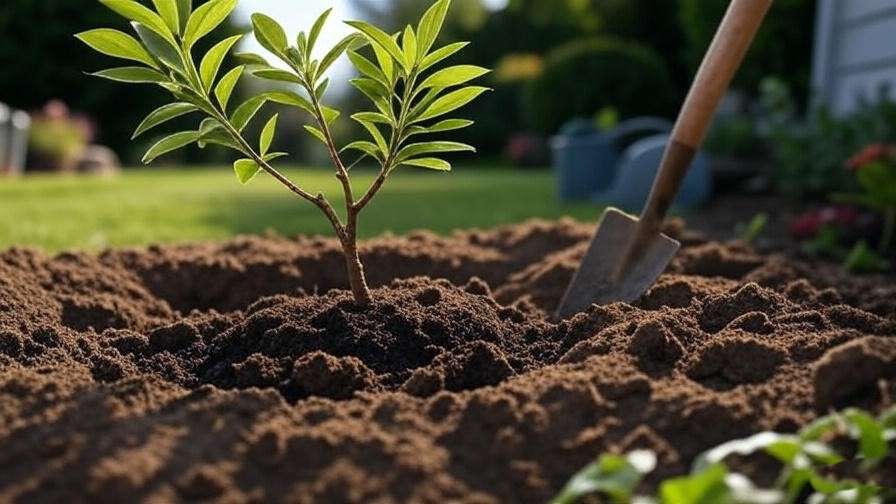
Ongoing Maintenance
- Watering: Provide deep, infrequent watering (1–2 times weekly) during the first two years. Established trees need less frequent watering, except during droughts.
- Pruning: Prune in late winter or early spring to remove dead or crowded branches. For flowering trees like lilacs or cherries, prune after blooming to avoid cutting next year’s buds.
- Fertilizing: Apply a balanced, slow-release fertilizer (e.g., 10-10-10) in spring. Avoid over-fertilizing, which can lead to weak growth.
- Pest and Disease Management: Monitor for common issues like powdery mildew (on crape myrtles) or aphids (on crabapples). Use organic solutions like neem oil or insecticidal soap for pests, and ensure good air circulation to prevent fungal diseases.
Expert Tips for Long-Term Success
- Mulch annually to maintain soil moisture and temperature. Keep mulch 2 inches away from the trunk to prevent rot.
- For acid-loving trees like magnolias or dogwoods, test soil pH annually and amend with sulfur if needed to maintain a pH of 5.5–6.5.
- In colder climates, wrap young trees in burlap during winter to protect against frost and wind damage.
Design Ideas: Incorporating Small Flowering Trees into Your Landscape 🏡
Small flowering trees are incredibly versatile, enhancing any garden design. Here are creative ways to integrate them.
Creating Focal Points
A single small flowering tree can transform a small yard or courtyard into a stunning centerpiece. For example, plant a Japanese flowering cherry near a patio for a springtime spectacle, or use a saucer magnolia in a front yard to draw the eye. Position the tree where it’s visible from key vantage points, like windows or seating areas, to maximize impact.
Mixing with Other Plants
Combine small flowering trees with perennials, shrubs, or groundcovers for a layered, cohesive look. Pair a redbud with shade-tolerant hostas and ferns for a woodland aesthetic, or plant a crape myrtle with lavender and salvia for a vibrant, sunny border. Ensure companion plants have similar light and water needs to simplify care.

Container Gardening
Dwarf varieties like star magnolia or crape myrtle ‘Pocomoke’ thrive in large containers, perfect for patios or balconies. Use pots with drainage holes and fill with a high-quality potting mix. Water more frequently than in-ground trees, and protect potted trees from extreme cold by moving them to a sheltered spot or wrapping the pot in winter.
Common Mistakes to Avoid When Growing Small Flowering Trees 🚫
- Overwatering or Poor Drainage: Soggy soil leads to root rot, especially for magnolias and dogwoods. Ensure proper drainage by amending clay soils with compost or sand.
- Planting in Unsuitable Conditions: Avoid planting sun-loving trees like crape myrtle in shade or acid-loving magnolias in alkaline soil. Research each tree’s needs before planting.
- Neglecting Pruning: Skipping pruning can lead to weak growth or reduced blooms. Follow species-specific pruning guidelines, like pruning lilacs after flowering.
- Expert Insight: A common error is planting too deeply, which suffocates roots. Always ensure the root flare is at or slightly above soil level, per advice from the Arbor Day Foundation.
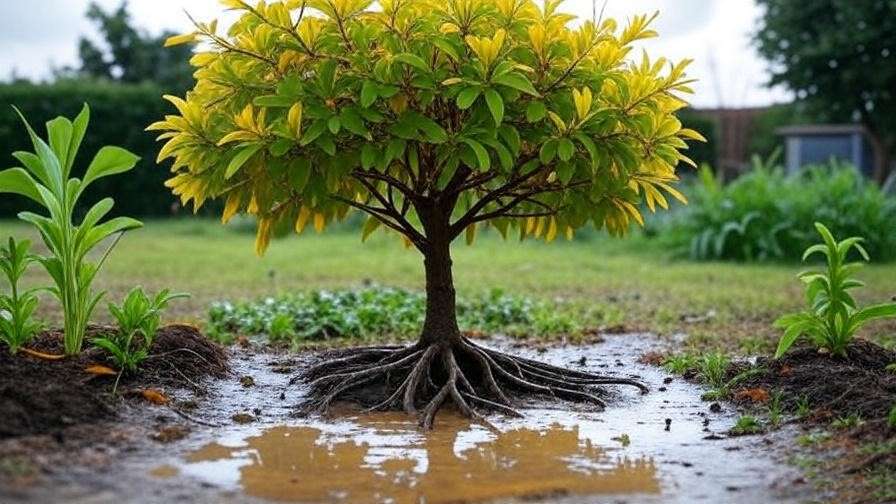
FAQs About Small Flowering Trees ❓
- What are the best small flowering trees for small yards?
Crabapple, redbud, and star magnolia are ideal for their compact size and vibrant blooms, fitting yards as small as 10×10 feet. - How fast do small flowering trees grow?
Most grow 1–2 feet per year under optimal conditions, with dwarf varieties like star magnolia reaching maturity in 5–7 years. - Can small flowering trees thrive in containers?
Yes, dwarf varieties like star magnolia or crape myrtle ‘Pocomoke’ are perfect for pots, provided they have adequate drainage and regular watering. - How do I care for small flowering trees in winter?
Mulch roots, wrap trunks in burlap, and avoid late-season pruning to prevent frost damage. For potted trees, move to a sheltered area. - Which small flowering trees attract pollinators?
Serviceberry, hawthorn, and crabapple draw bees, butterflies, and birds with their flowers and fruit.
Conclusion 🌼
Small flowering trees are a game-changer for any garden, offering vibrant blooms, year-round interest, and low-maintenance beauty. From the delicate blossoms of Japanese cherry to the bold colors of crape myrtle, these trees bring life to small spaces while supporting pollinators and enhancing your landscape. Armed with this guide, you’re ready to choose the perfect tree and care for it like a pro. Visit your local nursery, pick one or two trees from this list, and start transforming your garden today! Share your favorite small flowering tree or ask a question in the comments for personalized advice—let’s make your garden bloom! 🌸

